The Forbidden City: Artistic Marvels and Architectural Wonders
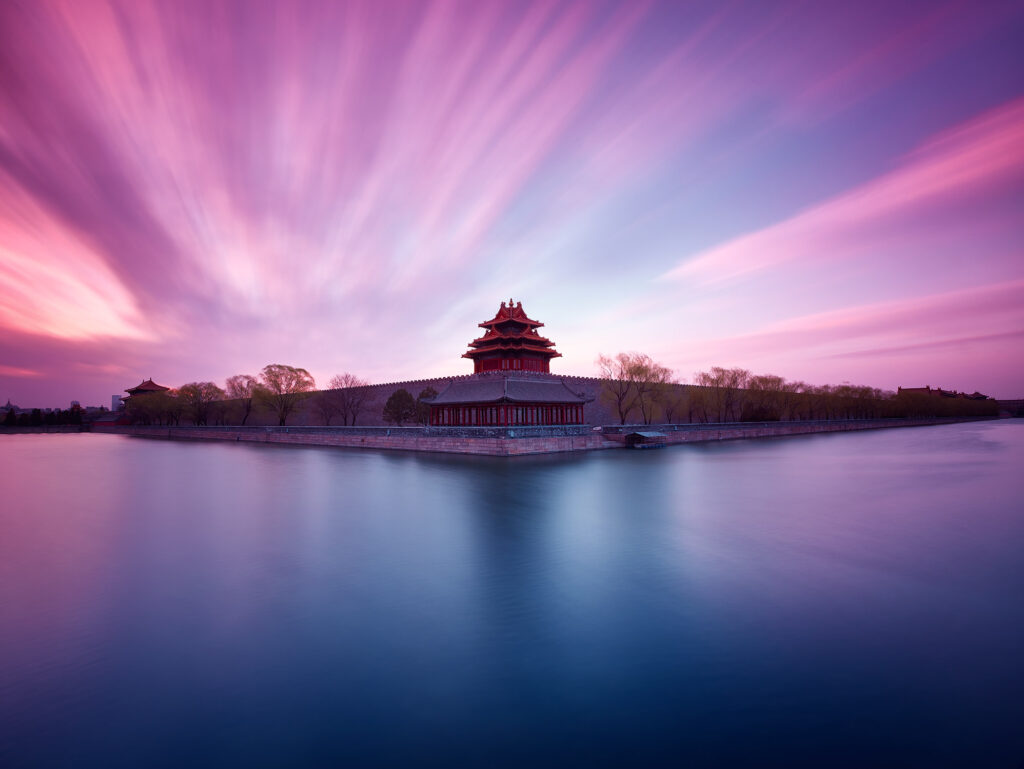
An Essential Guide to Visiting The_Forbidden_City
Stepping into the Forbidden City is like entering a living tapestry woven from the threads of China’s imperial history, grandeur, and artistry. This vast complex, nestled in the heart of Beijing, stands as a testament to the power and cultural richness of the Ming and Qing dynasties, who ruled from this majestic palace for over five centuries. As you cross the threshold of its imposing gates, a sense of awe washes over you, beckoning you to explore its labyrinthine halls and tranquil gardens.
Known as the “Palace Museum” today, the Forbidden City is a UNESCO World Heritage Site that houses the world’s largest collection of preserved ancient wooden structures. With its intricate architecture, vibrant colors, and symbolic decorations, every corner reveals stories of emperors, empresses, and the rituals that shaped Chinese civilization. The air is thick with history, and the beauty of the ornate buildings invites visitors to linger long after their initial curiosity is piqued.
Whether you’re a history buff, an architecture enthusiast, or simply a traveler seeking a glimpse into China’s glorious past, the Forbidden City promises an unforgettable experience. As you navigate through the sprawling courtyards and ornate halls, take a moment to appreciate the subtle details—like the dragon motifs that symbolize imperial power and the tranquil gardens that provide a serene escape from the bustling crowds. Each visit offers something new, a chance to connect with the essence of a bygone era while contemplating the echoes of time that resonate through these ancient walls.
Prepare for a journey that transcends mere sightseeing; this is an exploration of a cultural treasure that continues to inspire wonder and introspection. Welcome to the Forbidden City—where history, beauty, and the spirit of China converge.
In This Guide
- An Essential Guide to Visiting The_Forbidden_City
- The Rich History and Legends of The_Forbidden_City
- Main Highlights: What You Absolutely Can’t Miss
- Planning Your Visit: A Practical Guide
- Tickets: Prices, Booking, and Tips
- How to Get There: A Complete Transportation Guide
- Local Cuisine and Accommodation Nearby
- Frequently Asked Questions
- Final Thoughts on Your Trip
The Rich History and Legends of The_Forbidden_City
Nestled in the heart of Beijing, the Forbidden City (故宫博物院) is not just a stunning architectural marvel; it’s a testament to China’s rich imperial history and the legends that have proliferated around it. Commissioned in the early 15th century by the Yongle Emperor of the Ming Dynasty, this grand palace complex served as the political and ceremonial center of Chinese emperors for nearly five centuries, until the fall of the Qing Dynasty in 1911.
The story of the Forbidden City begins with the Yongle Emperor, who sought to consolidate his power and showcase the might of the Ming Dynasty. The construction was no small feat; it took over a million worker days and resulted in the creation of 980 buildings, all laid out according to the principles of feng shui, which dictated that the site harmonize with the surrounding natural landscape. The grandeur of its design is not just for show; the layout symbolizes the divine order of the universe, with the emperor seen as the Son of Heaven, ruling over all under Heaven.
As you stroll through the expansive courtyards and majestic halls, imagine the whispers of history echoing around you. Each structure embodies a story, from the Hall of Supreme Harmony, where emperors held their grandest ceremonies, to the intricate details of the dragon motifs that symbolize imperial authority. According to legend, the dragon is a celestial being, representing power, strength, and good fortune—qualities that every emperor aspired to embody.
The Forbidden City is steeped in tales of intrigue and mystique. It was here that the emperors lived, surrounded by concubines and eunuchs, their lives shrouded in secrecy. The term “forbidden” is derived from the fact that access to the inner sanctums was strictly limited; even high-ranking officials could only enter with specific permission. This exclusivity has given rise to countless stories and legends, many revolving around the enigmatic lives of the emperors and the elaborate rituals that governed court life.
One of the most famous legends speaks of the “Nine Dragon Screen,” a remarkable wall that features nine dragons, each symbolizing a different aspect of imperial power. It is said that the dragons were designed to protect the emperor from evil spirits and misfortune. The number nine holds great significance in Chinese culture, often associated with longevity and eternity, further emphasizing the emperor’s divine right to rule.
The Forbidden City also bears witness to the rise and fall of dynasties. During the Qing Dynasty, the complex underwent significant renovations, with added features like the intricate gardens and the famous “Palace of Tranquil Longevity.” Yet, despite its grandeur, the palace saw its share of turmoil. The last emperor, Puyi, was a mere child when he ascended the throne, and his reign marked the end of a millennia-old tradition of imperial rule.
Today, the Forbidden City stands as a UNESCO World Heritage site, attracting millions of visitors who come to admire its breathtaking beauty and delve into its storied past. With each step through its ancient halls, you are not just observing history—you are walking through a living tapestry woven with the dreams, desires, and destinies of emperors and commoners alike.
As you explore the Forbidden City, take a moment to reflect on the legends that surround it. Each corner of this vast complex holds a fragment of China’s rich history, waiting to be uncovered. From the tales of emperors and dragons to the architectural brilliance that has withstood the test of time, the Forbidden City invites you to become a part of its ongoing story, one that continues to inspire awe and curiosity in all who visit.
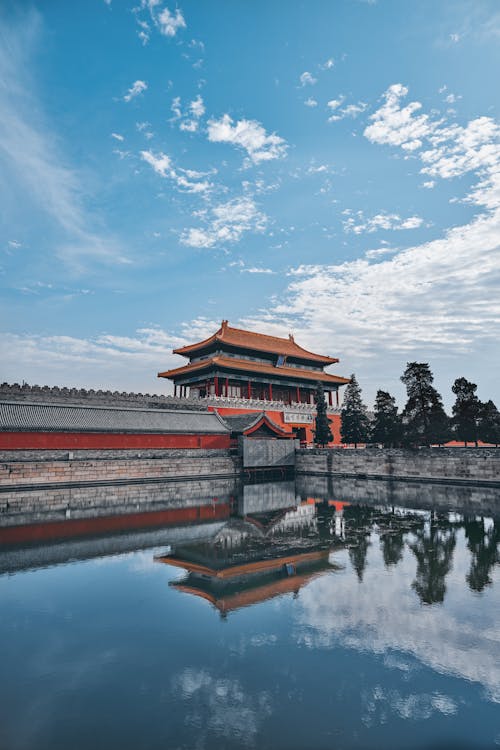
The_Forbidden_City.
Main Highlights: What You Absolutely Can’t Miss
When exploring the majestic Forbidden City in Beijing, certain highlights stand out, offering a glimpse into China’s imperial past and the intricate details that make this UNESCO World Heritage site a must-visit. Here’s a guide to the main highlights you won’t want to miss during your visit.
The Hall of Supreme Harmony
As you enter the Forbidden City, the Hall of Supreme Harmony is impossible to overlook. This grand structure, the largest in the complex, served as the throne room and is a stunning representation of Chinese architecture. Adorned with intricate dragon motifs and gilded roofs, it stands as a testament to the power and grandeur of the Ming and Qing dynasties. Don’t forget to snap a few photos from the expansive square that leads up to this iconic hall.
The Moat and Bridges
Surrounding the Forbidden City is a wide moat that not only served as a defensive barrier but also enhances the aesthetic beauty of the complex. Take a moment to stroll along the bridges that span this tranquil waterway. The reflections of the ornate structures in the calm waters create a picturesque setting that embodies the harmony of nature and architecture.
The Imperial Palaces and Their Details
While the palaces themselves may appear similar at first glance, it’s the small details that truly tell the story. From the colorful motifs on the walls to the symbolic dragon carvings, each building has its unique character. Pay close attention to the nine rows of nine bronze knobs on the towering red doors, symbolizing the Emperor’s supreme authority. Explore the Palace of Tranquil Longevity and the Hall of Mental Cultivation, taking time to appreciate the artistry in every corner.
The Gardens
After soaking in the architectural wonders, make sure to wander through the serene gardens of the Forbidden City. These lush spaces provide a peaceful escape from the bustling crowds and are filled with vibrant flora, rock gardens, and traditional Chinese pagodas. If you visit in spring, keep an eye out for cherry blossoms, which create a stunning contrast against the golden rooftops of the palaces.
The Bronze Water Cisterns
As you meander through the complex, don’t miss the massive bronze vats that stand sentinel near the main palace buildings. These cisterns were crucial for fire prevention, holding water year-round to safeguard against the ever-present threat of fire in wooden structures. Their weathered patina tells a story of vigilance and artistry that has endured through the centuries.
Jingshan Park
For the best panoramic views of the Forbidden City, take a short hike up to Jingshan Park. This former imperial garden offers breathtaking vistas of the sprawling complex below. Timing your visit to the late afternoon will reward you with golden light bathing the roofs and walls of the Forbidden City, creating an ethereal atmosphere. You might even catch locals performing traditional music, adding a cultural touch to your experience.
A Side Trip to the Temple of Heaven
Just a stone’s throw away, the Temple of Heaven is an architectural gem you shouldn’t miss. This stunning complex, where emperors once prayed for good harvests, showcases intricate designs that embody ancient Chinese cosmology. A quick visit here complements your exploration of the Forbidden City, enriching your understanding of Chinese history and spirituality.
Exploring the Forbidden City is like stepping back in time, where every corner holds a story waiting to be discovered. Embrace the details, enjoy the gardens, and take in the sweeping views to create an unforgettable experience in one of the world’s most extraordinary historical sites.
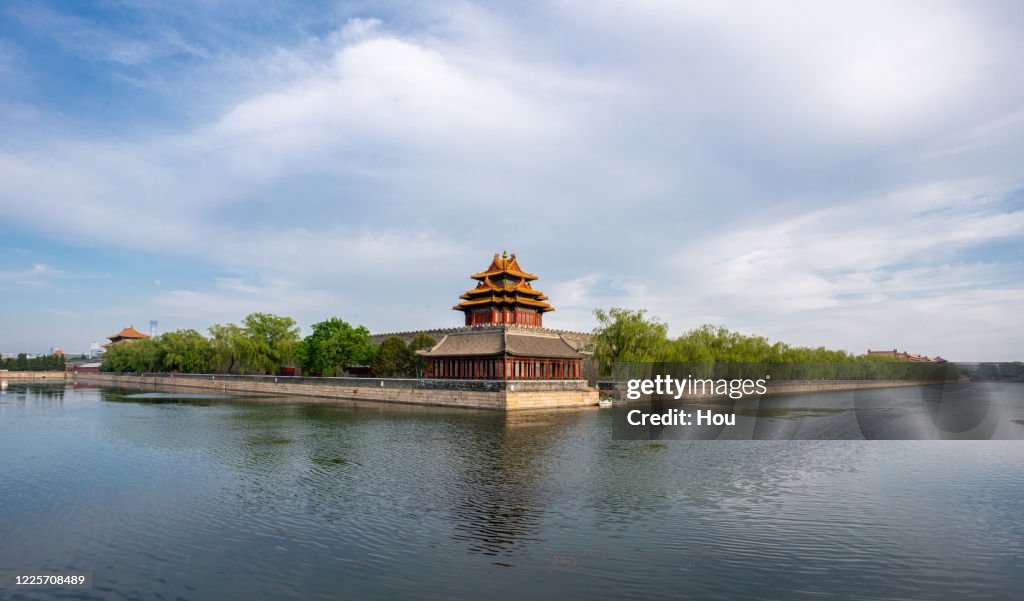
The_Forbidden_City.
Planning Your Visit: A Practical Guide
Planning Your Visit: A Practical Guide to the Forbidden City
Visiting the Forbidden City is a must for anyone traveling to Beijing. This iconic site, steeped in history and architectural grandeur, offers an unforgettable glimpse into China’s imperial past. Here’s how to make the most of your visit, ensuring a smooth and enriching experience.
Getting There
Location:
The Forbidden City is conveniently located in the heart of Beijing, just north of Tiananmen Square. The nearest subway station is Tiananmen East (Line 1), which is about a 10-minute walk from the main entrance.
Entrance:
Be mindful of the entrance you use. The primary entrance is the Meridian Gate (Wu Men), where you will find ticket counters and the bustling crowds. It’s easy to accidentally wander into the workers’ section, so keep an eye out for the right path!
Best Time to Visit
Season:
Spring (March to May) and autumn (September to November) are ideal for visiting due to mild weather and beautiful natural scenery. Try to avoid the summer months when the heat and humidity can be intense, and crowds are at their peak.
Timing:
Plan to arrive early in the day to beat the crowds, especially if you’re visiting during weekends or holidays. The Forbidden City opens at 8:30 AM, and getting there early allows you to explore the grounds more peacefully.
Tickets and Entry
Ticket Purchase:
Tickets can be purchased at the entrance, but to save time, consider booking online in advance. Prices for general admission are around 60 CNY (approximately $10 USD), and you’ll need to bring your ID.
Guided Tours vs. Self-Guided:
While hiring a guide can enhance your understanding of the site’s history and architecture, many travelers find that a good guidebook or mobile app suffices for a self-guided tour. This way, you can explore at your own pace and focus on areas that interest you the most.
What to See
Key Attractions:
As you wander through the vast complex, don’t miss these highlights:
- Hall of Supreme Harmony (Taihe Dian): The largest and most important building, where emperors held grand ceremonies.
- Palace of Heavenly Purity (Qianqing Gong): The residence of emperors and their empresses.
- Imperial Gardens: A serene space filled with beautiful flora, rock formations, and traditional pavilions, perfect for a leisurely stroll.
Small Details Matter:
Take time to appreciate the intricate details that adorn the buildings—floral motifs, dragon carvings, and the vibrant colors of the structures. Each element tells a story about the culture and history of the imperial dynasty.
Tips for a Great Experience
-
Dress Comfortably: Wear shoes suitable for walking, as you’ll be exploring a large area with many steps and uneven surfaces. Also, consider the weather; layers are recommended in cooler months.
-
Stay Hydrated: Bring a water bottle, as you may be walking for several hours. There are food and drink vendors inside, but they can be pricey.
-
Explore the Gardens: After touring the main halls, take a break in the gardens. They offer a peaceful escape from the crowds and a chance to enjoy the natural beauty of the surroundings.
Capture the Views
For stunning panoramic views of the Forbidden City, head to Jingshan Park, located just north of the complex. The hill in the park provides a fantastic vantage point to see the sprawling grounds and the rooftops glimmering in the sunlight. Late afternoon is the best time for photography, as the golden hour casts a warm glow over the entire area.
Nearby Attractions
After your visit, consider a short excursion to the Temple of Heaven, known for its beautiful architecture and serene environment. It’s a quick ride from the Forbidden City and can easily complement your day of exploration.
Final Thoughts
Visiting the Forbidden City is more than just a sightseeing trip—it’s a journey through time. By planning ahead and embracing the experience, you’ll leave with lasting memories and a deeper appreciation of China’s rich heritage. Enjoy your adventure in this historic wonder!
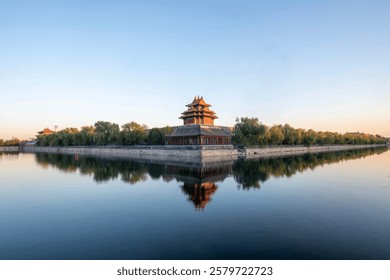
The_Forbidden_City.
Tickets: Prices, Booking, and Tips
When planning your visit to the iconic Forbidden City, it’s essential to navigate the ticketing process effectively to make the most of your experience. Here’s everything you need to know about ticket prices, booking options, and some handy tips to enhance your visit.
Ticket Prices
As of 2024, the ticket prices for the Forbidden City are as follows:
- Regular Admission: Approximately CNY 60 (around $9 USD) during the off-peak season (November to March).
- Peak Season Admission: CNY 80 (about $12 USD) during the peak season (April to October).
- Free Admission Days: Certain days throughout the year offer free entry, especially during national holidays, but be prepared for larger crowds on these days.
Booking Your Tickets
You can purchase tickets to the Forbidden City in several ways:
-
Online Booking: The most convenient option is to buy your tickets online through the official Forbidden City website or authorized ticket platforms. This allows you to skip the long lines at the entrance, especially during peak tourist seasons.
-
On-Site Purchase: If you prefer spontaneity, tickets can also be bought at the entrance. However, be aware that this may involve waiting in line, which can be considerable during busy times.
-
Guided Tours: Consider booking a guided tour that includes admission. These tours often provide insights into the history and significance of the Forbidden City, along with skip-the-line access, making them a worthwhile investment.
Tips for a Smooth Visit
-
Plan Ahead: The Forbidden City is vast, with numerous palaces and gardens to explore. Allocate at least half a day to wander through its intricate pathways and soak in the stunning architecture.
-
Timing Your Visit: The late afternoon is an ideal time to visit, as the lighting is perfect for photography, and the crowds tend to thin out. If possible, aim to arrive shortly before closing to enjoy a more serene experience.
-
Explore Beyond the Main Sites: While the Hall of Supreme Harmony is famous, don’t forget to venture into lesser-known areas. The tranquil gardens and smaller halls often provide a quieter atmosphere and unique photo opportunities.
-
Download a Guide App: If you prefer a self-guided tour, consider downloading an app that offers audio commentary and historical context for various sites within the Forbidden City. This can enrich your experience without the need for a formal guide.
-
Stay Hydrated and Snack Smart: The extensive walking can be exhausting, so bring water and snacks to keep your energy levels up. There are also food vendors nearby if you prefer to grab a bite between sites.
By keeping these ticketing details and tips in mind, you can ensure a memorable visit to the Forbidden City, immersing yourself in the rich history and architectural beauty that this UNESCO World Heritage Site has to offer. Happy exploring!
How to Get There: A Complete Transportation Guide
Reaching the Forbidden City in Beijing is a delightful experience that sets the tone for your visit to this iconic landmark. Nestled in the heart of Beijing, the Forbidden City is easily accessible through various transportation methods. Here’s how to navigate your way there seamlessly:
Arriving by Subway
One of the most efficient ways to get to the Forbidden City is via the Beijing Subway. The closest station is Tiananmen East (天安门东站) on Line 1. Here’s how to make your journey:
- Purchase Your Ticket: At the station, use the ticket vending machines or ticket counters to buy your fare. A one-way ticket is typically inexpensive.
- Board the Train: Follow the signs to the platform and board a train heading towards the direction of Pingguoyuan (苹果园).
- Get Off at Tiananmen East: After a few stops, disembark at Tiananmen East Station.
- Exit the Station: Follow the signs to Exit A, and you’ll find yourself at Tiananmen Square, from where the entrance to the Forbidden City is just a short walk away.
Walking from Tiananmen Square
Once you exit Tiananmen East Station, the Forbidden City is just a stone’s throw away:
- Direction: Head northwest toward the imposing Tiananmen Gate, which is the entrance to the Forbidden City. As you walk, soak in the vibrant atmosphere of Tiananmen Square.
- Entrance: After passing through Tiananmen Gate, you’ll arrive at the main entrance to the Forbidden City, where you can purchase tickets.
Buses and Taxis
If you prefer a more direct route or are traveling from a different part of the city, buses and taxis are great options:
-
Buses: Numerous bus lines serve the area around the Forbidden City. Look for buses numbered 1, 2, 4, 5, 10, 20, 52, 82, 120, 126, and 803, which stop near Tiananmen Square. Check local bus schedules for the most convenient lines from your location.
-
Taxis: Taxis are widely available throughout Beijing. Use a ride-hailing app like Didi or simply wave down a taxi on the street. Make sure to have your destination written in Chinese (故宫博物院) to show the driver.
Bike Sharing
For the environmentally conscious traveler, Beijing’s bike-sharing program offers a fun way to explore the city. Here’s how:
- Download an App: Use apps like Mobike or Ofo to locate a nearby bike.
- Rent a Bike: Follow the app’s instructions to unlock a bike.
- Ride to the Forbidden City: Enjoy a scenic ride through the city; there are bike lanes that make it safe and enjoyable.
- Park the Bike: Once you arrive, be sure to park the bike in a designated docking area nearby.
Tips for Your Visit
- Best Time to Visit: To avoid the crowds, consider visiting early in the morning or later in the afternoon.
- Ticket Purchase: It’s advisable to buy your tickets online in advance, especially during peak tourist seasons, to skip the long lines.
- Plan Your Route: Familiarize yourself with the layout of the Forbidden City to make the most of your visit.
With these transportation options at your disposal, you’ll find that getting to the Forbidden City is as enjoyable as the visit itself. Each mode of transport offers a unique perspective of Beijing, making your journey to this historical treasure a memorable part of your travel experience.
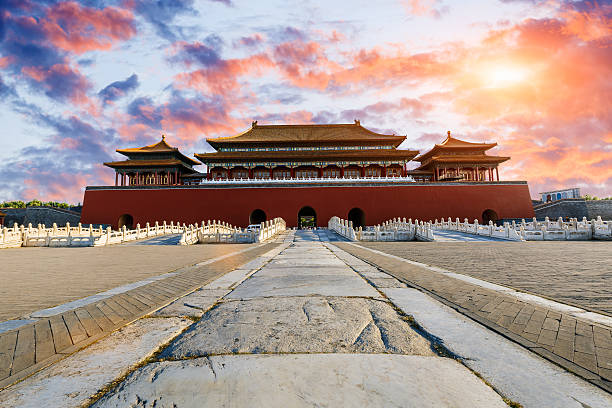
The_Forbidden_City.
Local Cuisine and Accommodation Nearby
When your explorations of the Forbidden City leave you feeling hungry and in need of a cozy place to rest, you’ll find a delightful array of dining options and accommodations nearby.
Culinary Delights to Savor
Just steps away from the grand palaces, Beijing’s culinary scene beckons with flavors that reflect the city’s rich history and culture.
-
Jing Yaa Tang
For a taste of traditional Peking duck, head to Jing Yaa Tang. This elegant restaurant serves up perfectly roasted duck with all the traditional accompaniments. The ambiance combines modern design with a nod to Chinese heritage, making it a great spot to unwind after a day of sightseeing. -
Dadong Roast Duck
Famous for its crispy skin and tender meat, Dadong is another must-visit for Peking duck enthusiasts. The restaurant prides itself on a unique preparation method that results in a dish that’s both delicious and visually stunning. Pair your meal with a selection of local wines for a truly memorable dining experience. -
Din Tai Fung
If you’re in the mood for something different, Din Tai Fung offers exquisite dumplings and a variety of Taiwanese dishes. Their xiao long bao (soup dumplings) are a crowd favorite and a must-try for any foodie. -
Wangfujing Snack Street
For a more casual dining experience, stroll over to Wangfujing Snack Street. Here, you can sample a range of street food, from skewered meats to sweet treats, all while soaking in the vibrant atmosphere. It’s a great way to experience local flavors and grab a quick bite.
Comfortable Stays Nearby
After indulging in Beijing’s local flavors, retreat to one of the nearby accommodations that cater to international travelers.
-
The Beijing Hotel NUO
Just a short walk from the Forbidden City, this luxury hotel offers a blend of historical charm and modern amenities. With beautifully appointed rooms, a spa, and several dining options on-site, you can unwind in style after a long day of exploring. -
Hotel Cote Cour Beijing
Nestled in a traditional courtyard setting, this boutique hotel captures the essence of Beijing’s cultural heritage. The serene environment, combined with personalized service, makes it a perfect retreat for those looking for a tranquil escape. -
Peking Yard Hostel
For budget-conscious travelers, this charming hostel offers a cozy atmosphere with a sociable vibe. Located close to the Forbidden City, it’s an ideal base for young travelers looking to meet others and share travel stories. -
Crowne Plaza Beijing Wangfujing
Centrally located, this hotel provides easy access to both the Forbidden City and other major attractions. With comfortable rooms, a rooftop bar, and an indoor pool, it’s a fantastic choice for families or those wanting a bit more luxury without breaking the bank.
Final Thoughts
Whether you’re savoring sumptuous dumplings or resting in a historic hotel, the area surrounding the Forbidden City boasts a wealth of culinary delights and comfortable accommodations. After a day of immersing yourself in China’s imperial past, you’ll find these local gems enhance your overall experience in Beijing.
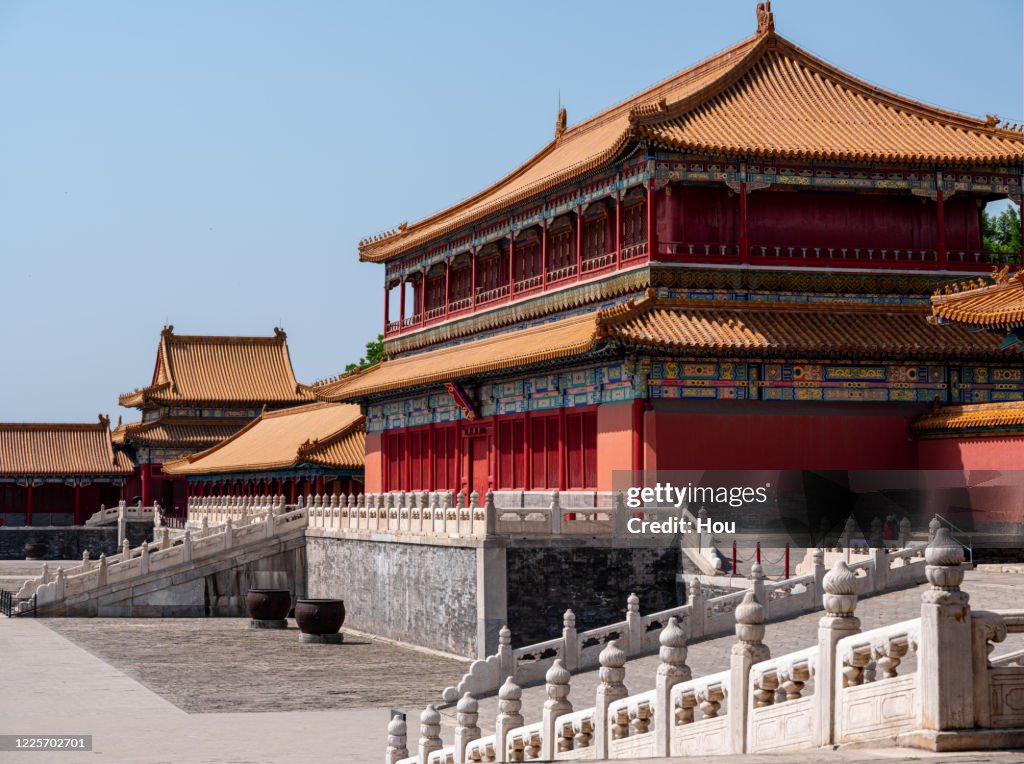
The_Forbidden_City.
Frequently Asked Questions
Frequently Asked Questions About Visiting The Forbidden City
1. What is the best time to visit The Forbidden City?
The ideal time to visit is during the spring (April to May) or autumn (September to October) when the weather is mild and the crowds are smaller. Avoid peak tourist seasons like summer and major Chinese holidays to enhance your experience.
2. How do I get to The Forbidden City?
The Forbidden City is located in the heart of Beijing. The easiest way to reach it is by taking the subway to Tiananmen East or Tiananmen West Station (Line 1) and walking through Tiananmen Square to the entrance. Taxis and ride-sharing services are also widely available.
3. Do I need to buy tickets in advance?
It’s highly recommended to purchase your tickets online in advance to avoid long queues. Tickets can be bought through the official website or authorized platforms. Note that entry is timed, so choose your slot carefully.
4. Is there a guided tour option available?
Yes, guided tours are available for those who prefer a more in-depth experience. You can hire a guide on-site or book a tour through various travel agencies. Alternatively, a good guidebook or mobile app can provide insightful information for a self-guided tour.
5. What should I wear while exploring The Forbidden City?
Dress comfortably and in layers, especially if you’re visiting during the colder months. Be sure to wear comfortable shoes, as you’ll be doing a lot of walking on cobblestones and uneven surfaces.
6. Are there facilities available for food and rest?
While The Forbidden City has a few cafes and snack stalls, options are limited. It’s a good idea to carry water and snacks. For a more substantial meal, consider visiting nearby restaurants after your visit.
7. Can I take photos inside The Forbidden City?
Yes, photography is allowed in most areas of The Forbidden City, but be respectful and avoid using flash in sensitive areas. Certain locations may have restrictions, so look for signage that indicates where photography is not permitted.
8. How much time should I allocate for my visit?
Plan to spend at least 3 to 4 hours to fully explore The Forbidden City and appreciate its intricate architecture and historical significance. If you want to take your time and enjoy the gardens, consider setting aside a whole day.
Final Thoughts on Your Trip
As your journey through the Forbidden City comes to a close, take a moment to reflect on the layers of history, culture, and artistry you’ve encountered within its grand walls. This imperial treasure, with its vibrant colors, intricate carvings, and serene gardens, offers a glimpse into the lives of emperors and the rich tapestry of Chinese heritage. Whether you found joy in the delicate details of the architecture or the stories behind each ornate door, the Forbidden City has a way of captivating the imagination and stirring the soul.
Don’t forget to step back and appreciate the panoramic views from nearby Jingshan Park, where the setting sun casts a warm glow over this magnificent complex. It’s the perfect way to bid farewell to a place that has stood the test of time, embodying the beauty and resilience of a culture that continues to thrive.
As you leave, consider how the echoes of the past linger in the present—reminding you that travel is not just about the sights you see, but the experiences you immerse yourself in. The Forbidden City is a masterpiece, but it’s the moments you share with fellow travelers and the stories you carry forward that will resonate long after you’ve returned home. Embrace the memories you’ve created, and let them inspire your next adventure, wherever it may lead. Safe travels!